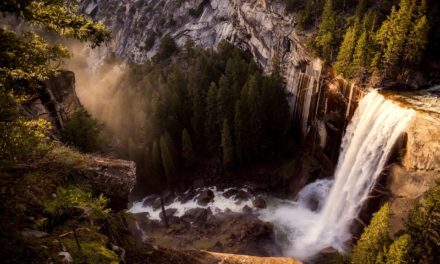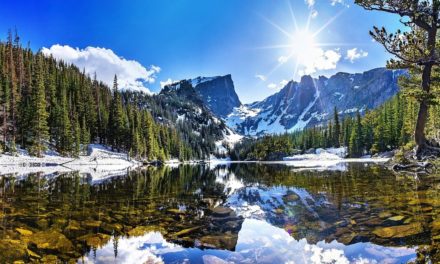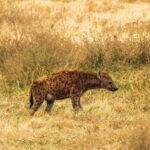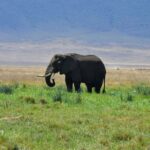Table of Contents
Overview / About
Straddling the border of Tennessee and North Carolina, Great Smoky Mountains National Park is the most visited national park in the United States. Spanning over 522,000 acres, the park is famous for its mist-covered peaks, lush forests, and deep valleys — the “smoke” that gives the range its name is actually natural mountain mist rising from dense vegetation.
Designated a UNESCO World Heritage Site and an International Biosphere Reserve, this park preserves one of the richest temperate ecosystems in the world. Established in 1934, the Smokies are not only a natural wonder but also a cultural treasure, with traces of early Appalachian settlements still visible in its valleys and trails.
Wildlife & Nature
The park’s biodiversity is unmatched in North America, with over 19,000 documented species and many more yet to be discovered.
Key Species: Black bears (the park’s most famous residents), white-tailed deer, bobcats, coyotes, river otters, salamanders, and wild turkeys.
Birdlife: More than 200 bird species, including pileated woodpeckers, scarlet tanagers, and peregrine falcons.
Ecosystems:
- Old-Growth Forests: Towering hemlocks, tulip poplars, and oaks that have stood for centuries.
- Streams & Waterfalls: Clear mountain streams like Abrams Creek and waterfalls such as Laurel Falls and Grotto Falls.
- High Elevations: Above 6,000 feet, spruce-fir forests resemble those of Canada.
In spring, wildflowers blanket the valleys, earning the Smokies the nickname “Wildflower National Park.”
Experiences & Activities
With its mix of scenic drives, hikes, and cultural sites, the Smokies offer something for everyone.
Top Experiences:
- Clingmans Dome: Drive or hike to the highest point in the park for sweeping 360° views.
- Cades Cove: A lush valley loop with restored cabins, churches, and some of the park’s best wildlife viewing.
- Hiking: Over 800 miles of trails, including a stretch of the Appalachian Trail. Popular hikes include Laurel Falls, Alum Cave, and Chimney Tops.
- Scenic Drives: Newfound Gap Road and Roaring Fork Motor Nature Trail showcase the park’s best landscapes.
- Waterfalls: Visit Rainbow Falls, Abrams Falls, or Mingo Falls for iconic mountain views.
- Camping & Stargazing: Spend a night under the stars at Elkmont or Deep Creek campgrounds.
- Historic Sites: Explore old Appalachian homesteads, grist mills, and log cabins preserved from the 1800s.
Best Time to Visit
Open Year-Round, but each season brings its own charm.
- Spring (April – June): Wildflowers bloom; streams run full.
- Summer (July – August): Lush greenery, waterfalls, and pleasant high-altitude hikes.
- Fall (September – November): Brilliant foliage draws huge crowds — the most popular season.
- Winter (December – March): Quiet, with snow at higher elevations and fewer visitors.
Best Months: April to June for wildflowers, and October for fall colors.
How to Reach & Park Entry
Location: Along the Tennessee–North Carolina border, near Gatlinburg, TN, and Cherokee, NC.
Nearest Airports:
- Knoxville (TYS): 45 miles from Gatlinburg.
- Asheville (AVL): 60 miles from Cherokee.
By Road:
- From Gatlinburg: Enter via U.S. 441 (Newfound Gap Road).
- From Cherokee: Southern entrance via U.S. 441 North.
Entry Fees:
- No park entrance fee (one of the few free U.S. national parks).
- Parking Tag Required: $5 per day or $40 annually (effective since 2023).
Where to Stay / Camping Options
Inside the Park:
- Elkmont Campground: Largest campground with 200+ sites, near Gatlinburg.
- Cades Cove Campground: Ideal for wildlife viewing and cycling.
- Smokemont Campground: Near the Oconaluftee Visitor Center, great for families.
Lodging Nearby:
- Gatlinburg, TN: Wide range of hotels, cabins, and lodges.
- Cherokee, NC: Quieter town with cultural experiences and easy park access.
Tip: Reservations for campsites are highly recommended during peak seasons (April – October).
Travel Tips / Safety Notes
- Drive carefully, winding roads and wildlife crossings are common.
- Keep a safe distance from black bears (at least 50 yards).
- Weather can change quickly; carry layers even in summer.
- Mobile reception is limited in most of the park.
- Avoid feeding animals or leaving food unattended at campsites.
- Stop only at designated pullouts for photos.
Packing List
- Lightweight, moisture-wicking clothes
- Warm layers for high elevations
- Hiking boots or trail shoes
- Rain jacket or poncho
- Binoculars and camera
- Water bottle and energy snacks
- Flashlight or headlamp
- Maps or GPS (offline navigation)
Visitor Statistics
The Great Smoky Mountains National Park is the most visited national park in the U.S., attracting over 13 million visitors annually. Most visitors enter through Gatlinburg (Tennessee) or Cherokee (North Carolina). Despite its popularity, you can still find peaceful trails and quiet corners beyond the main routes.
Conservation & Responsible Tourism
The park’s mission is to preserve one of the last large tracts of Appalachian forest. Conservation efforts focus on air quality restoration, invasive species control, and black bear protection.
Local organizations and volunteers help with trail maintenance, stream restoration, and habitat monitoring.
Travel Responsibly:
- Stay on marked trails to prevent erosion.
- Carry out all trash and avoid feeding wildlife.
- Choose eco-friendly lodgings in gateway towns.
- Support local artisans and Appalachian heritage projects.












